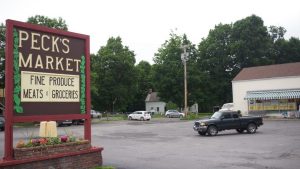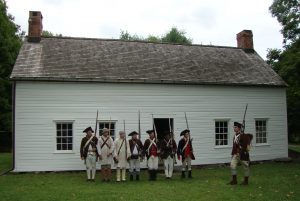
The Graham-Brush House is one of the few surviving 18th century log houses in the Hudson Valley. The Little Nine Partners Historical Society bought the house in 1997, saving it from an uncertain fate, and has since had several studies done on the house to try to date it and unveil its history.
- In 1999 architectural historian Neil Larson prepared a detailed architectural assessment of the house. Here is his write-up of the house for The Hudson Valley Regional Review.
- In 2002 City/Scape completed an archaeological investigation of the house, with a main goal of determining the location of the builder’s workman’s trench, and secondary goals of finding the privy and remains of the original exterior kitchen.
"Archaeological Investigation"
- In 2016, Dr. Edward R. Cook and William J. Callahan, Jr. performed a dendrochronology study of the house to determine its age.
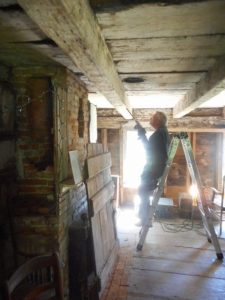
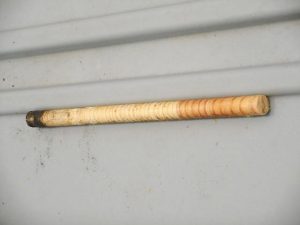
Click on the photo below to watch "That Old House", a series of videos of work being done on the Graham-Brush House, by Stan Hirson of Pine Plains Views:
In summary: here are some fast facts about the Graham-Brush House:
- The existing house reflects two periods: pre-1776 and 1900.
- No fewer than eight families from different socioeconomic backgrounds have lived here since 1776.
- Built in two phases between 1750-1776.
- The original building on the west (Phase 1) was an 18 ft. square one-room, one story log structure. The dendrochronology study supports the Society's theory that this original structure could have been built as early as 1750, perhaps used as a surveyor’s cottage by the Grahams. Certain architectural features point to it being built as a more permanent structure than the military-style hut proposed by Larson.
- The first occupant we know of was Lewis Graham, a well-connected colonial landowner and politician, and grandson of a partner (Augustine Graham) in the Little Nine Partners Patent. The Grahams were patriots in the American Revolution, and about 1776 Lewis Graham escaped the invading British in Morrisania (south Bronx today) and moved here for the duration of the war.
- At some point, the structure was enlarged: an east room and second story were added (Phase 2).
- The dendro results show that the second phase of construction happened earlier than thought, around 1770-1771. This means the addition already existed when Lewis Graham took up residence here at the time of the Revolution.
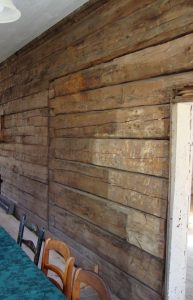
The original exterior with its square-hewn pine logs can be viewed from the interior of the modern meeting room addition. The original structure, and the second story and east room additions, can easily be made out from this vantage point.
- Among architectural features of note from this time: Dutch-style pad hinges and rose head nails in the flooring.
- Alfred Brush, a tailor, was the owner from 1829-1872.
- Brush made many changes to the house to bring it up to 19th century standards, incl. 6-over-6 sash windows, wallpapering, and carpeting.
- Isaiah Dibble, a dry goods merchant, lived here with his family from 1890-1946.
- Dibble added novelty siding to the outside of the house and the lean-to kitchen on the back (removed by the Society and replaced with an addition that serves as a meeting room with a modern bathroom and space for small kitchen).
- From the outside the house looks pretty much as it would have under Dibble, ca. 1900.
- In 1998, the house was vandalized and a fire was set in the upstairs northeast room. Thankfully the fire was put out before we lost the entire house, but it did do significant damage to the second floor.
- The house was added to the National Register of Historic Places with significance at the statewide level in 1999.
- A total of 1255 artifacts have been recovered from outside excavations.
- An old shoe was found in the chimney. This article talks about concealed shoes and their meaning: http://www.whitedragon.org.uk/articles/folk.htm
Sources and Suggested Further Reading:
A Brief History of the Graham-Brush House, by Dyan Wapnick (please note that this publication was written before the dendrochronology assessment was done).

